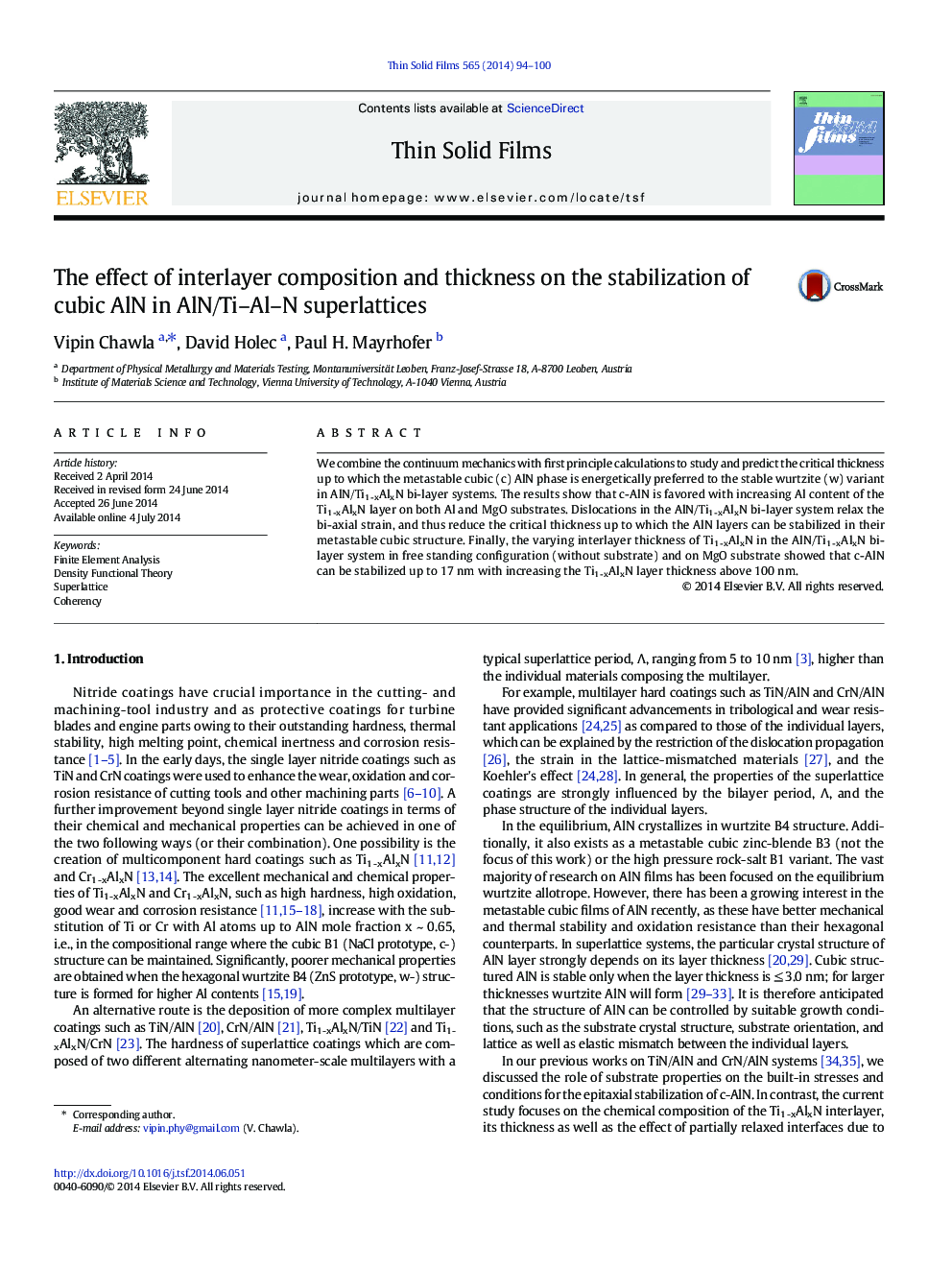| Article ID | Journal | Published Year | Pages | File Type |
|---|---|---|---|---|
| 1665280 | Thin Solid Films | 2014 | 7 Pages |
•Combine Finite Element (ABAQUS) and Density Functional Theory methods•Predict the critical thickness up to which the metastable c-AlN phase is preferred•Increasing Al content in the Ti1 -xAlxN layer, increases the c-AlN critical thickness.•Misfit dislocations are leading to smaller critical thickness of c-AlN.•Increase in the Ti1 -xAlxN interlayer thickness, increases the critical thickness of c-AlN.
We combine the continuum mechanics with first principle calculations to study and predict the critical thickness up to which the metastable cubic (c) AlN phase is energetically preferred to the stable wurtzite (w) variant in AlN/Ti1 -xAlxN bi-layer systems. The results show that c-AlN is favored with increasing Al content of the Ti1 -xAlxN layer on both Al and MgO substrates. Dislocations in the AlN/Ti1 -xAlxN bi-layer system relax the bi-axial strain, and thus reduce the critical thickness up to which the AlN layers can be stabilized in their metastable cubic structure. Finally, the varying interlayer thickness of Ti1 -xAlxN in the AlN/Ti1 -xAlxN bi-layer system in free standing configuration (without substrate) and on MgO substrate showed that c-AlN can be stabilized up to 17 nm with increasing the Ti1 -xAlxN layer thickness above 100 nm.
